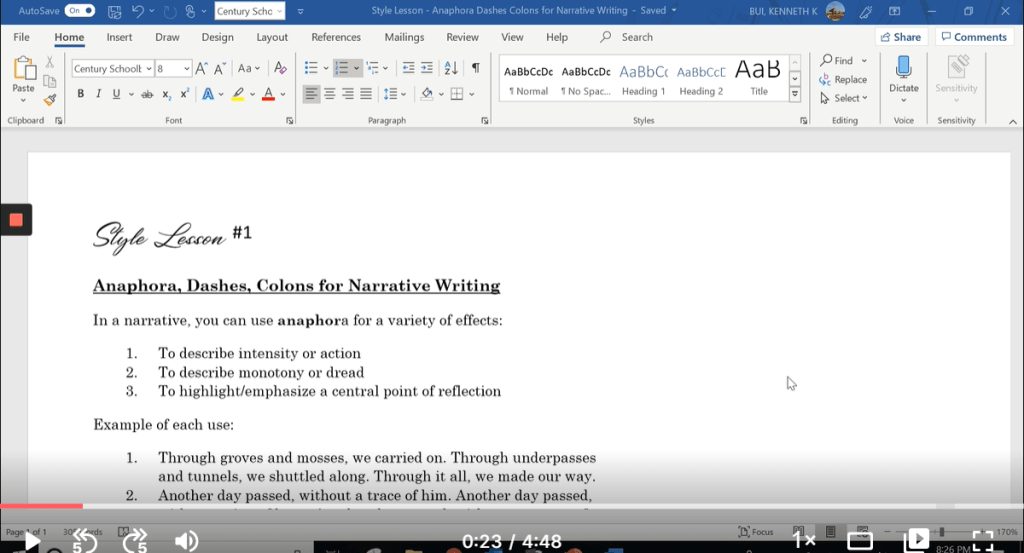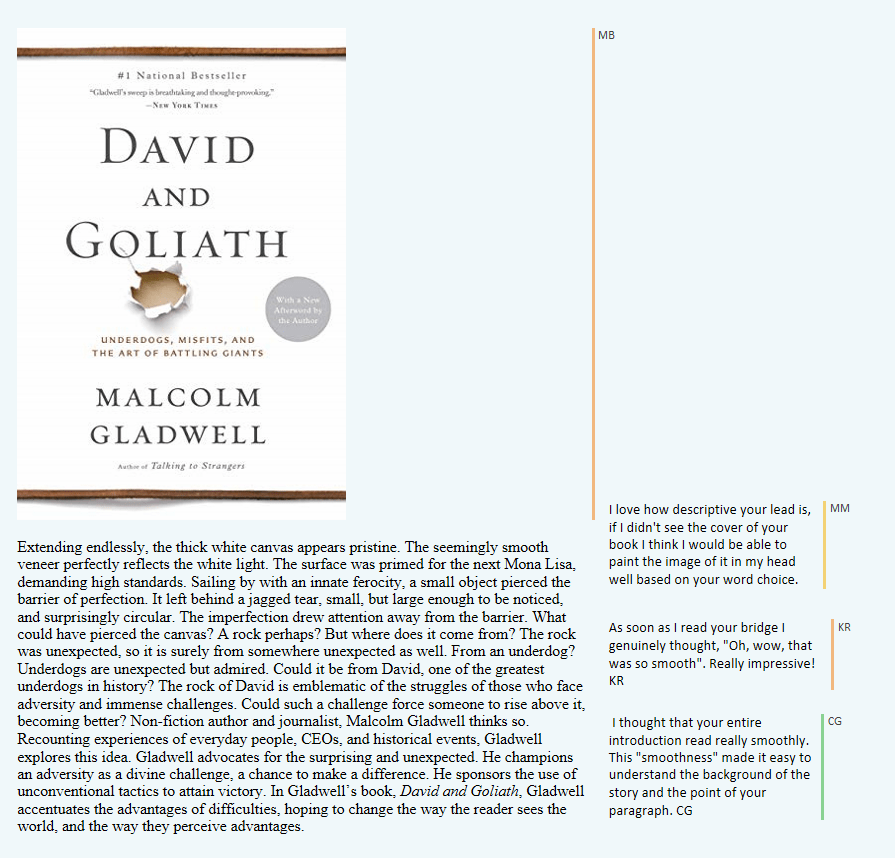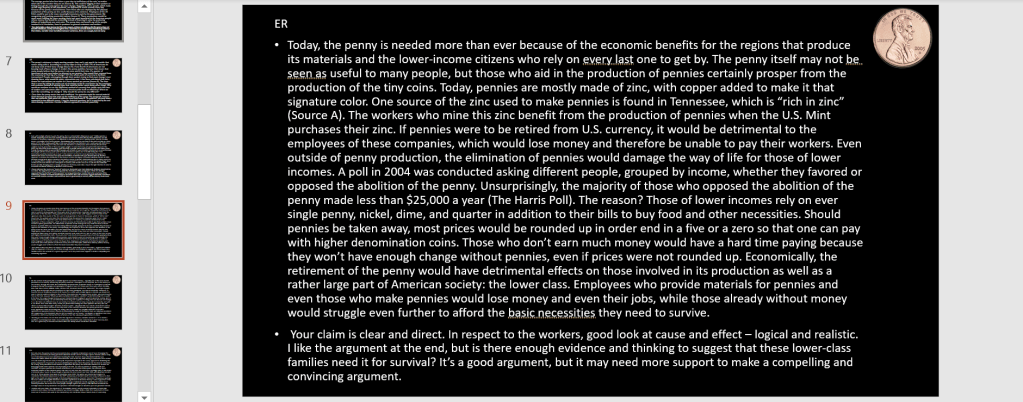
When writers revise in our classrooms, it is vital that they have the guidance and the tools to empower them to do so. Between last spring and this school year, writing teachers have especially turned to a variety of digital tools to find ways to keep the revision process authentic, valuable, and productive.
In a time when the possibilities and options seem endless, it is crucial to know which tools are available to us and understand how they can help our students think, observe, reflect, experiment, and ultimately revise their writing.
Here are five digital tools that can help our students dive into meaningful revision:
Screencast Revision Mini-Lessons
A central practice in the revision process will always be modeling writing skills and showcasing exactly how to revise. Screencasts are a wonderful way to record your screen, paired with your narration, to provide students with these models – anything from a close look at a specific syntax technique to a demonstration of you revising your own writing.
They can serve as a great anticipatory set to a revision session, or you can take advantage of the fact that pre-recorded mini-lessons can allow for asynchronous and self-paced viewing, if needed, for students. A principle of the flipped classroom approach, prompting students to check out a quick screencast before a live session can elevate the potential for revisions. It can afford students more time to process the mini-lesson, as well as the chance to have more time in class to revise, especially when we are right there to support them. We know that this time for writers can be invaluable.
There are several applications and sites that offer screencasting; platforms like Loom, Microsoft PowerPoint, and Screencast-O-Matic (to name a few) are straightforward and work nicely.

Digital Annotations
We know that a great part of the revision process involves annotating a draft and making notes while revising. Many platforms offer the capability to digitally annotate writing, allowing for a number of functions: highlighting, color-coding, circling, crossing-out, digital inking, commenting…the list goes on.
Just as students would mark up their physical paper when revising, this digital way of doing so allows students to revise their writing using the functions to their advantage. Simple. Efficient. Versatile. For example, revision strategies like ARMS (Add, Remove, Move, Substitute) can thrive in a new way with the options for digital annotations.
It is worth noting that the ability for students to leave comments quickly and meaningfully on their own work throughout the stages of revision is key. Through it all, writers are thoughtfully engaged in the revision process

Collaboration Space
A lot of revision is sparked by moments of reading and learning from other writers. This is where writers realize the benefit of leaning on one another – discussing and discovering what works and what doesn’t. A Digital Collaboration Space is a space that allows students to upload writing, read their peers’ drafted pieces, and receive feedback and insight from one another.
If you use a digital notebook, learning management system, or any application that allows for a collaborative space like this, take advantage of the opportunity to bring your writers together during the revision step.
For a basic set-up, this could be as simple as a collaborative slideshow or document to which all writers have access. Each writer gets his/her/their own slide or page to share work-in-progress writing, comments can be added, and students leave with feedback for their next revision actions and with inspiration from seeing what creative risks others are taking.


Revision Station
The same way you might create physical stations in your classroom for revision…who says you can’t offer them for students digitally? Revision stations thrive on variety, focused tasks, and student choice. Their end goal? To give students experiences that allow them to experiment with language and revise their current writing pieces.
There are many directions you can take with a digital revision station. Consider the options. Perhaps, a try-and-apply station with a video (or even include a screencast you make). Perhaps, a page with links to helpful resources and handouts (i.e. thoughtful transitions, stronger word choice, new sentence structures) and a chance to fine-tune compositions based on what is provided. Perhaps, a slideshow with mentor texts with sentence mimic exercises to encourage students to add flare and style to drafted writing. Design revision stations tailored for your community of writers.

Digital Journal for Writing Growth
Asking students to keep a digital journal can provide students with a space to keep writing goals, reflections on their work, revision to-do lists, and more. This can be a basic format or a bit more customized if you create templates and tables in which students can compile their reflections and revision ideas. There are tons of ways to keep a digital journal; it could be easily housed in a file type of your choice (for example, a simple Word/Google Doc).
Digital journals centered on writing growth can be a fantastic tool to support metacognition and inspire students to take real ownership of their revision work.

While it is tempting to want to try every educational technology tool out there, remind yourself to stay grounded in the needs of your classroom and the needs of your students, all while sticking to a few things that really work for you.
Consider what it will take to guide your students through meaningful revision.
As we strive to make the revision process authentic, valuable, and productive, it is all about being thoughtful and intentional in choosing the right digital tools for our writers.
-Kenny
Which digital tools best allow you to empower your students to revise their writing? You can connect with me on Twitter @kenbuiCBSD.
At Moving Writers, we love sharing our materials with you, and we work hard to ensure we are posting high-quality work that is both innovative and practical. Please help us continue to make this possible by refraining from selling our intellectual property or presenting it as your own. Thanks!

2 Comments